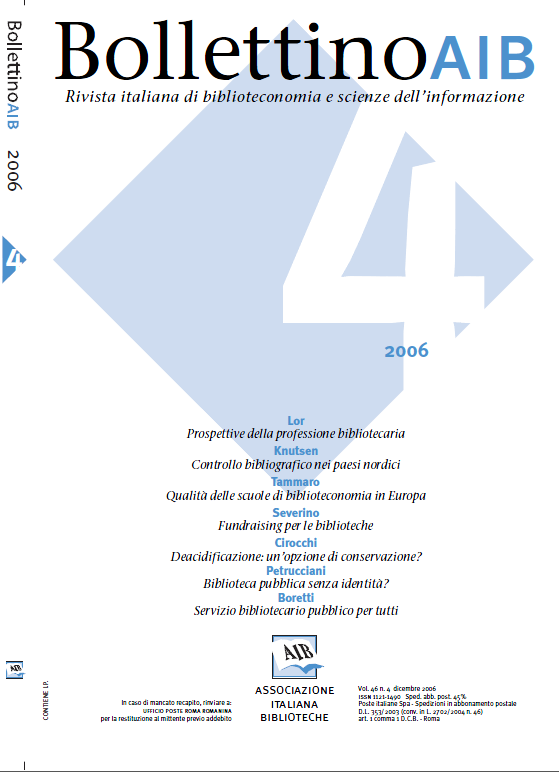Fundraising for libraries
Main Article Content
Abstract
Public finance alone is no longer able to fund the conservation, protection and development of cultural heritage and activities. Libraries have a pressing need to address the market to find the necessary funds for improving services offered and the achievement of their mission.
If a business is chosen as the addressee of the fundraising campaign, the request must be concentrated especially on the quantity and quality of interest of the “benefactor” for an investment in culture rather than on the requirements of the beneficiaries.
A fundraising strategy based on identity and good cause can be one of the roads to follow but not necessarily the only one. It is believed that the identity element is a strong appeal item especially for the user public, that seeks acknowledgement factors. On the other hand this principle loses importance before economic subjects such as businesses, which are mostly impersonal.
The clarifying element on the road to follow in constructing a fundraising model is to start from the difference between donation and sponsoring. Donation is a funding model that is completely removed from the interests of the donor. On the other hand sponsoring is based on the give-and-take relation between two subjects, in which one (the sponsor) sustains the activity of the other (the beneficiary) with an aim of obtaining a promotional return.
Equilibrium between the parties is created when the seller-beneficiary is ready and willing to interpret the requirements of the potential acquirer-benefactor-sponsor, illustrating the benefits of the operation, which will not be mutual (those of the seller are obvious), even if only those obtained by the purchaser are mentioned.
The beneficiaries proposal must be on a level with the limits, cultural and institutional references within which it must fit.
If a business is chosen as the addressee of the fundraising campaign, the request must be concentrated especially on the quantity and quality of interest of the “benefactor” for an investment in culture rather than on the requirements of the beneficiaries.
A fundraising strategy based on identity and good cause can be one of the roads to follow but not necessarily the only one. It is believed that the identity element is a strong appeal item especially for the user public, that seeks acknowledgement factors. On the other hand this principle loses importance before economic subjects such as businesses, which are mostly impersonal.
The clarifying element on the road to follow in constructing a fundraising model is to start from the difference between donation and sponsoring. Donation is a funding model that is completely removed from the interests of the donor. On the other hand sponsoring is based on the give-and-take relation between two subjects, in which one (the sponsor) sustains the activity of the other (the beneficiary) with an aim of obtaining a promotional return.
Equilibrium between the parties is created when the seller-beneficiary is ready and willing to interpret the requirements of the potential acquirer-benefactor-sponsor, illustrating the benefits of the operation, which will not be mutual (those of the seller are obvious), even if only those obtained by the purchaser are mentioned.
The beneficiaries proposal must be on a level with the limits, cultural and institutional references within which it must fit.
Article Details
Section
Articles

This work is licensed under a Creative Commons Attribution-ShareAlike 4.0 International License.
